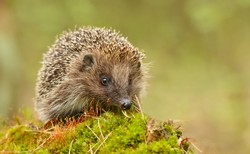Post-glacial small mammal recolonizations
During the most recent Ice Age, Europe's glaciers displaced many animal species. At the end of this period, the animals moved to the north once more, but the details remain unclear. The EU-funded SMALL_MAM_RECOL (Post-glacial recolonisation and Holocene anthropization impact on populations of shrews and hedgehogs from western Europe inferred from zooarchaeology, historical biogeography and ecological modelling) project reconstructed post-glacial movements. The team studied several species of shrews and hedgehogs, using key fossils, radiocarbon dating and new statistical methods for morphologically separating species. Researchers gathered and reviewed material from French archaeological sites, spanning from about 17 000 years ago to historical times. Similar material from Spanish sites covered the range from late Pleistocene to Holocene. Workers supplemented the archaeological specimens with museum specimens from Western and Eastern Europe, and Mediterranean islands. The team used such data to create a baseline for the recolonization process. Group members received training in morphological analysis, and applied the theory to the specimens. The team devised a method for separating specimens into distinct populations, based on statistical analysis of mandible morphology. Investigators found larger average sizes in populations from North Atlantic and Mediterranean islands. Similarly, the team was also able to separate two shrew species. Project researchers also developed new techniques for collagen extraction from bones. Minimal amounts of collagen proved sufficient for accurate radiocarbon dating. The resulting discrimination of populations helped in the reconstruction and dating of the movements of shrews and hedgehogs northward in Western Europe.







